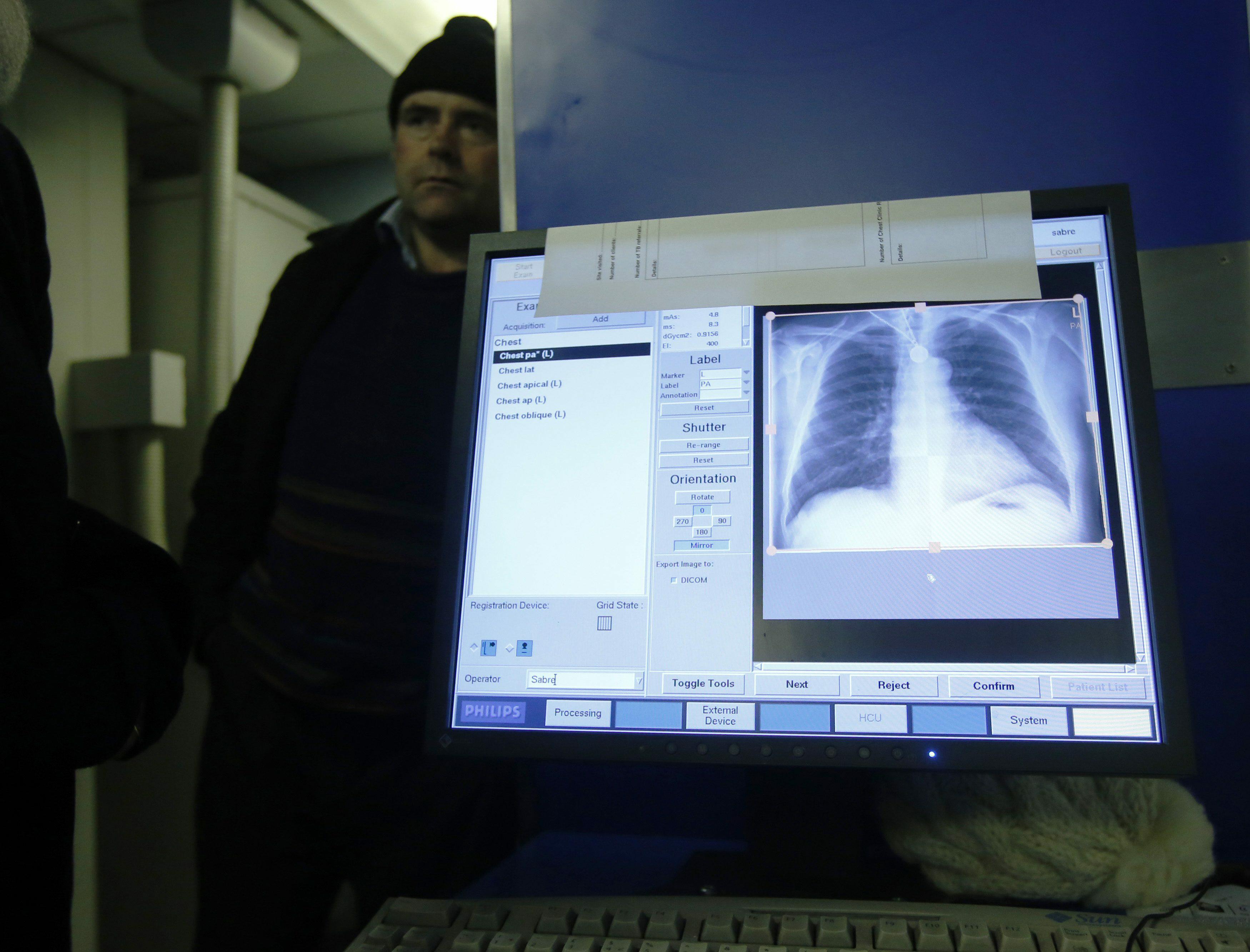
Humans have been battling tuberculosis since the Stone Age. But only in the last century has real progress been made against the disease. A vaccine, first used in humans in 1921, is still in use around the world today. And a series of antibiotics, beginning with streptomycin in the 1940s, has proven effective in treating infections.
Since 1990, TB’s annual death toll has been cut nearly in half. From 2000 to 2014, better diagnosis and treatment saved some 43 million lives. Nonetheless, progress has slowed to a crawl, suggesting that the battle is far from over. The annual decline in cases over the past decade has been a mere 1.65 per cent; in 2014, TB killed 1.5 million people.
Meanwhile, strains of the disease are developing resistance against treatment. The misuse and mismanagement of antibiotics has resulted in multidrug-resistant TB. These strains must be treated with second-line medications, which are more expensive and often cause worse side effects. Strains that are resistant to second-line drugs, known as extensively drug-resistant TB (XDR-TB), have also appeared.
Given the enormous economic burden and widespread human suffering caused by TB, a comprehensive effort to tackle the disease is urgently needed. In a series of articles in the British medical journal The Lancet, Salmaan Keshavjee, a professor of global health and social medicine at Harvard Medical School, outlined a strategy for defeating it. Keshavjee and a group of TB scientists, clinicians, and advocates from governmental and nongovernmental organizations, hospitals, and universities set themselves the goal of bringing TB’s death toll to zero – and outlined the measures needed to achieve it.
The first step is to ramp up data-collection efforts. TB epidemics, like those of other infectious diseases, vary by geography; as result, eradication efforts need to be customised to local conditions. Local TB programmes need to make better use of existing data, expand routine collection, modernize data-storage systems, and develop the analytical infrastructure needed to measure the effects of local interventions. These findings need to be made available within the country where data were collected, and the lessons learned must be shared with neighboring countries and regions.
Moreover, health-care workers must expand efforts to prevent new infections and quickly treat fresh cases. By actively seeking out victims and treating them quickly, so that they are no longer infectious, the chain of TB transmission can be broken. This strategy has been proven effective by empirical evaluation and mathematical modeling.
At the same time, efforts must be made to control the seedbeds of the disease, the latent infections that are the source of virtually all new cases of active TB. Mycobacterium tuberculosis, the bacteria that causes the disease, can lay dormant for long periods, during which the victim shows no symptoms of having been infected. Targeting TB at this stage would stop the bacteria’s spread and reduce the disease’s global burden. Rolling out preventive therapies in at-risk populations and developing better diagnostic tests to identify those with asymptomatic infections would help drain reservoirs of the bacteria.
Developing a more effective vaccine would have the biggest impact on the epidemic. The Bacillus Calmette–Guérin vaccine is given to infants in many parts of the world, but its efficacy against pulmonary TB is highly variable. To eliminate the disease globally, a better vaccine would be crucial.
Finally, any effort to eradicate TB must acknowledge that the disease is rooted in poverty and social exclusion. Since the middle of the twentieth century, worldwide efforts to address TB have emphasised biomedical solutions and focused on treating outbreaks. But, before the development of antibiotics, improvements in living standards had helped reduce the impact of TB. Integrating a biomedical approach with an emphasis on the importance of good nutrition, decent housing, and human welfare will be necessary if the disease is to be brought to heel.
The global community must work together and translate existing knowledge and strategies into effective programmatic interventions in communities most afflicted by TB. By developing new tools – including rapid diagnostics, safe and shorter treatment of TB infection and disease, and an efficacious TB vaccine – strengthening health systems, and improving the living conditions of at-risk populations, we can neutralise one of humankind’s oldest killers. Only then will we be able to consign TB, at long last, to the history books. - Project Syndicate